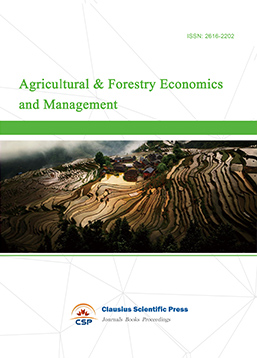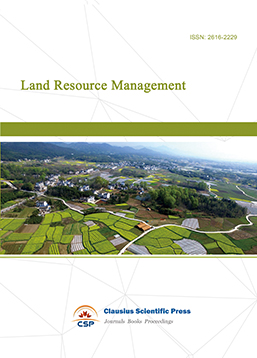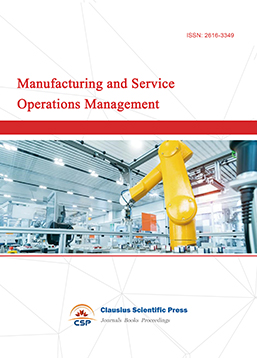Research and analysis on the value-added efficiency of listed port companies in China
DOI: 10.23977/ieim.2023.061015 | Downloads: 14 | Views: 1172
Author(s)
Xinyue Du 1, Yawei Zhang 2
Affiliation(s)
1 School of Software and Microelectrionics, Peking University, Beijing, 100871, China
2 College of Economics, China-ASEAN Institute of Financial Cooperation, Guangxi University, Nanning, 530004, China
Corresponding Author
Xinyue DuABSTRACT
In order to solve the problem of value-added inefficiency of Chinese port listed companies, this paper aims to investigate whether port integration and strengthening port infrastructure can be a solution to the problem of value-added inefficiency of listed port companies, then put forward some suggestions. This study uses data of Chinese listed port companies, then uses DEA analysis and Tobit regression to investigate the role of state-owned equity in listed port companies played by port integration on the value-added efficiency. The results show that listed port companies with port integration have higher value-added efficiency; the richer the port infrastructure, the higher the value-added efficiency; and the higher the proportion of state-owned shares held, the more effective the impact of port integration on the value-added efficiency of listed port companies.
KEYWORDS
Port integration, Proportion of state-owned shareholding, Infrastructure, Value-added efficiencyCITE THIS PAPER
Xinyue Du, Yawei Zhang, Research and analysis on the value-added efficiency of listed port companies in China. Industrial Engineering and Innovation Management (2023) Vol. 6: 114-123. DOI: http://dx.doi.org/10.23977/ieim.2023.061015.
REFERENCES
[1] Stamatovic, K., de Langen, P., Groznik, A., 2018. Port cooperation in the North adriatic ports. Research in Transportation Business & Management, 2018, 26:109-121.
[2] Huo W, Wei Z, Chen S L. Recent development of Chinese port cooperation strategies[J]. Research in Transportation Business & Management, 2018, 26:67-75.
[3] Notteboom T, Yang Z. Port governance in China since 2004: Institutional layering and the growing impact of broader policies[J]. Research in Transportation Business & Management, 2017, 22:184-200.
[4] Wu S, Yang Z. Analysis of the case of port co-operation and integration in Liaoning (China)[J]. Research in Transportation Business and Management, 2018, 26:18-25.
[5] Zhang Q, Yang D, Chen Y. Port integration on the Yangtze River: Does it follow an "interest balance" pattern?[J]. Transport Policy, 2021, 108(3):83-94.
[6] Dong G, Zheng S, Lee T W. The effects of regional port integration: The case of Ningbo-Zhoushan Port[J]. Transportation Research Part E: Logistics and Transportation Review, 2018, 120:1-15.
[7] Song, D.-W., Panayides, P.M. Global supply chain and port/terminal: integration and competitiveness. Marit. Pol. Manag, 2008, 35 (1):73–87.
[8] Saeed N, Larsen O I. An application of cooperative game among container terminals of one port[J]. European Journal of Operational Research, 2010, 203(2):393-403.
[9] Bottasso A, Conti M, Ferrari C, et al. The impact of port throughput on local employment: Evidence from a panel of European regions[J]. Transport Policy, 2013, 27:32-38.
[10] Song L, Geenhuizen M V. Port infrastructure investment and regional economic growth in China: Panel evidence in port regions and provinces[J]. Transport Policy, 2014, 36:173-183.
[11] Bottasso A, Conti M, Ferrari C, et al. Ports and regional development: A spatial analysis on a panel of European regions[J]. Transportation Research Part A Policy & Practice, 2014, 65:44-55.
[12] Ping D, Lu S, Xiao H. Evaluation of the relevance measure between ports and regional economy using structural equation modelling [J]. Transport Policy, 2013, 27:123-133.
[13] Si Zengxiu. Interactive development of port infrastructure and port city economy[J].Management Review, 2015, 27(11): 33-43.
[14] Kong Qingfeng, Li Xiu'e. The driving effect of port development on hinterland economy: An empirical study based on Rizhao Port [J].Journal of Shandong University(Philosophy and Social Sciences),2008(04):73-81.
[15] Fabling R, Grimes A, Sanderson L. Any port in a storm: Impacts of new port infrastructure on exporter behaviour [J]. Transportation Research Part E Logistics & Transportation Review, 2013, 49(1):33-47.
[16] Vega L, Cantillo V, Arellana J. Assessing the impact of major infrastructure projects on port choice decision: The Colombian case [J]. Transportation Research, 2019, 120(FEB.):132-148.
[17] Jensen, M., and W. Meckling, "Theory of the Firm: Managerial Behavior, Agency Costs and Ownership Structure", Journal of Financial Economics 1976, 3, 305—360.
[18] Coles J L, Meschke F F. Structural Models and Endogeneity in Corporate Finance: The Link between Managerial Ownership and Corporate Performance [J]. Journal of Financial Economics, 2012, 103(1):149-168.
[19] Chen Deping, Chen Yongsheng. Research on the relationship between equity concentration, equity balance and firm performance—Empirical test of small and medium-sized enterprises sector in 2007~2009[J].Accounting Research, 2011(01):38-43.
[20] Lin Guanjuan, Wang Hui, Han Tao. Research on the impact of equity division reform on state-owned holding ratio and enterprise performance [J].Journal of Financial Research, 2016(01):192-206.
[21] Fan J P H, Wong T J, Zhang T, "Politically Connected CEOs, Corporate Governance, and Post-IPO Performance of China's Newly Partially Privatized Firms". Journal of Financial Economics, 2007, 84(2):330-357.
[22] Firth M, Malatesta P H, Xin Q, et al. Corporate investment, government control, and financing channels: Evidence from China's Listed Companies [J]. Journal of Corporate Finance, 2012, 18(3):433-450.
[23] Charnes A., Cooper W. W., Rhodes E. Measuring the efficiency of decision making units [J]. European Journal of Operational Research, 1978, 2(6):429-444.
[24] Jiang Huihui, Wen Yanping. Research on financing efficiency of listed companies in China's ports based on DEA-Tobit method [J]. Ocean Economy, 2023, 13(01):41-50. DOI:10.19426/j.cnki.cn12-1424/p.2023.01.006.
[25] Tim Coelli. A multi-stage methodology for the solution of orientated DEA models [J]. Operations Research Letters, 1998, 23(3):143-149.
[26] Feng Feng, Chen Lei, Huang Han. Measurement and improvement path of operational efficiency of listed companies in Chinese ports: Based on SBM-DEA model [J].China Circulation Economy, 2017, 31(06):106-112.
[27] Li S, Liu J, Kong Y. Pilot Free Trade Zones and Chinese Port-listed companies Performance: An Empirical Research Based on Quasi-Natural Experiment [J]. Transport Policy, 2021, 111:125-137.
[28] Cheon S H, Dowall D E, Song D W. Evaluating impacts of institutional reforms on port efficiency changes: Ownership, corporate structure, and total factor productivity changes of world container ports [J]. Transportation Research Part E: Logistics and Transportation Review, 2010, 46(4):546-561.
[29] Han Bing, Liu Fangming. Research on the evaluation of enterprise value added efficiency under the scenario of competition: A case study of listed port enterprises in China [J].Scientific Research Management, 2021, 42(04):55-64.
[30] Wang Yizhu. Analysis of the development ability of China's port enterprises in the new era--Taking Shenzhen Yantian Port Co. as an example[J]. Mall Modernisation, 2022(22):83-85. DOI:10.14013/j.cnki.scxdh.2022.22.029.
| Downloads: | 27006 |
|---|---|
| Visits: | 812455 |
Sponsors, Associates, and Links
-
Information Systems and Economics

-
Accounting, Auditing and Finance

-
Tourism Management and Technology Economy

-
Journal of Computational and Financial Econometrics

-
Financial Engineering and Risk Management

-
Accounting and Corporate Management

-
Social Security and Administration Management

-
Population, Resources & Environmental Economics

-
Statistics & Quantitative Economics

-
Agricultural & Forestry Economics and Management

-
Social Medicine and Health Management

-
Land Resource Management

-
Information, Library and Archival Science

-
Journal of Human Resource Development

-
Manufacturing and Service Operations Management

-
Operational Research and Cybernetics


 Download as PDF
Download as PDF